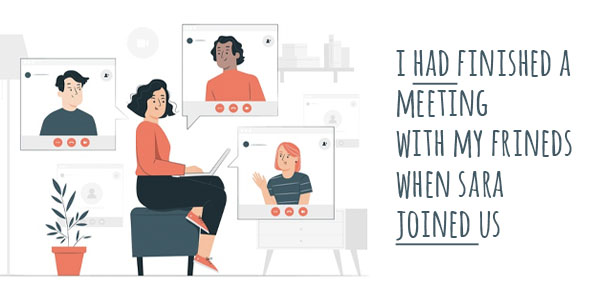What is The Past Perfect
The past perfect is a verb tense that is used to express actions which have finished at some point in the past. Specifically, it is used to clarify that one event happened before another.
To put things in perspective, let’s check the following examples:
- Carl had gone out when we arrived in the bus station.
In the above sentence, we can see that there are two events:
- Carl had gone out.
- When we arrived in the bus station.
So, the first part of the sentence has the first event (Carl had gone out), and the second part has the following event (we arrived in the bus station). Since both events happened in the past, the past perfect (in this case, “Carl had gone”) is used to illustrate that one event happened before the other.
- I had bought some candles before the light went out.
- When they arrived, we had already started the party.
- I had lit a fire, before it went all dark.
- She was exhausted because she had not slept well.
When to Use the Past Perfect
1- When two actions have finished in the past:
As we mentioned earlier, this tense is used to make it clear which action happened first in the past before another. Moreover, it is often used to provide a reason for why something happened.
- I had eaten brunch, so I was not hungry.
- It had snowed that night, so we couldn’t go out.
2- Continued Past Events
We can also use the past perfect to talk about an event or action that happened in the past and continued until another one.
- On the 15th of June, I had lived here for two weeks.
3- Wishes in the Past
When talking about things that we wish we could change in the past.
- I wish I had not gone to bed so late.
- He could have passed the exam if he had studied harder.
- If I had known about these profitable stocks, I would have invested in them.
How to Use the Past Perfect
It is easy to form the past perfect tense, and it doesn’t change if the subject is either singular or plural. The positive form of this tense is:
Had + [past participle].
- I had been
- You had played
- She had cooked
- He had slept
- It had rained
- We had travelled
- They had bought
To form the negative form, you can just add the negation word “not” after had.
- I had not been
- You had not played
- She had not cooked
- He had not slept
- It had not rained
- We had not travelled
- They had not bought.
To form the “yes, no question”, you simply need to put the word “had” before subject.
- Had I seen it?
- Had you read?
- Had he eaten?
- Had she left?
- Had it rained?
- Had we met?
- Had they come?
To form the “Wh questions” you simply need to put the question at the beginning.
- When had I come?
- Why had you left?
- Where had she been?
- How had he performed?
- When had it rained?
- How had we met?
- Where had they studied?

